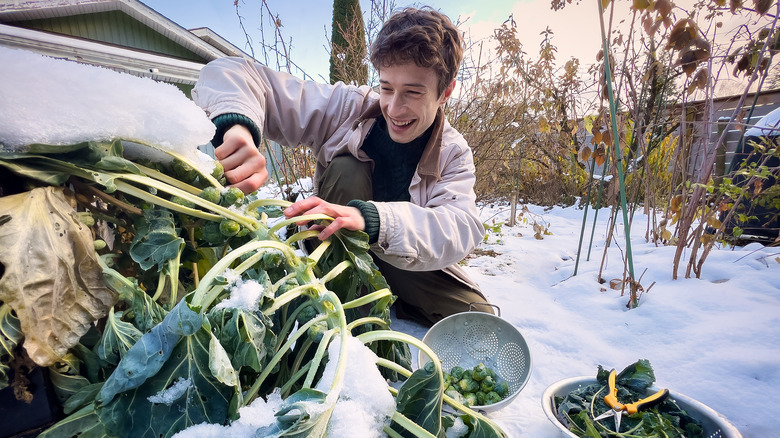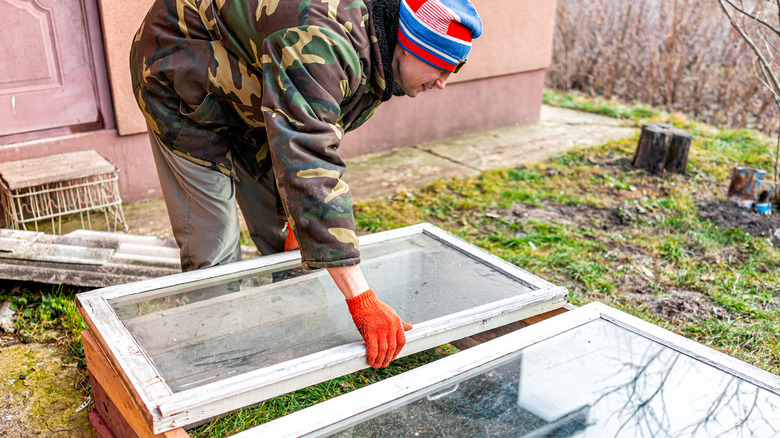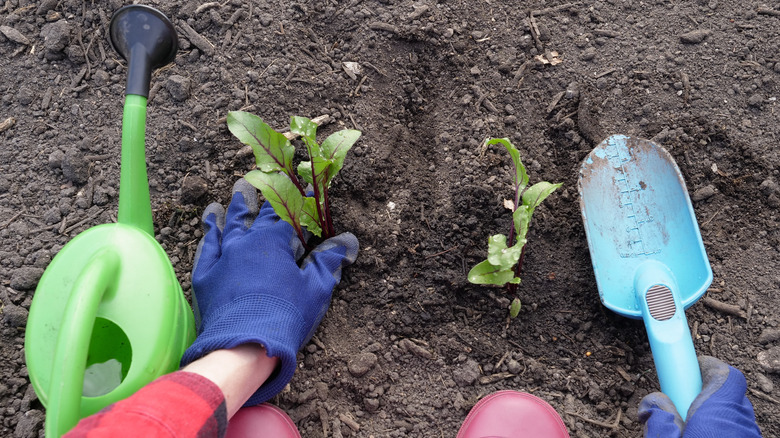Tips For Starting A Backyard Winter Garden For Beginners
As the weather cools and days grow shorter, many gardeners are getting ready to put their garden to bed. But you don't have to stop gardening just because the warm season is ending. Depending on which USDA plant hardiness zone you're in, now may be the perfect time to start a backyard winter garden to squeeze in a second harvest of homegrown veggies before next spring.
Some plants, like garlic and onions, can be planted as late as November in most hardiness zones and will overwinter without much additional protection or care. Garlic actually needs to go through a 6 to 8-week period of cold temperatures to develop bulbs properly. Other species don't need a cold period, but are cold-hardy enough to grow through the cool season.
Outdoor winter gardening is possible in most of the United States. Only those living in Alaska and along the Canadian border may need to take their winter gardening indoors or into a heated greenhouse. But you can still use some of the tips in this article to extend your growing season into the fall. To get the best results, you'll need to make a couple of changes from your normal warm-season garden routine. From selecting a different site for your winter garden to building in some protection from the harsh winter winds and freezing temps, it takes a little extra planning to grow a successful winter garden. Here are some of the most important tips for winter gardening, based on your hardiness zone.
Starting a winter garden in zones 3 through 7
The key to a successful harvest any time of year is to correctly map out and space your garden at the beginning. But as the sun moves further south in the winter, your summer garden bed might no longer get enough light through winter. With days getting shorter as well, it's even more important to make sure to plant your cool-season garden in the part of your yard that gets the most sun in winter.
It's also important to plant winter crops directly in the ground rather than a raised bed. The soil in raised beds can freeze quickly, shocking the roots of even the hardiest plants. Soil in the ground, on the other hand, freezes more gradually.
The last key to successful winter gardening is weather protection. Before the coldest temperatures arrive, make sure to protect your garden from winter with a DIY cold frame. Cold frames are typically made from wood or metal frames with clear glass or plastic lids, and they protect plants from the wind and provide some insulation while still allowing sunlight in. This structure can usually maintain a temperature of about 5 to 10 degrees warmer than the outside temperature. So, it's still important to choose the most cold-hardy veggies like broccoli, kale, cabbage, and spinach. Brussel sprouts are another tasty vegetable that will thrive in your winter garden.
Starting a winter garden in zones 8 and above
For gardeners in zones 8 and above, outdoor gardening through the winter requires only a few extra considerations. Make sure to fertilize your soil or move your plot to a new location,as growing year-round in the same plots may put a stress on nutrient levels. Like in other USDA zones, the sun will shift positions in the sky, so you may need to prepare a garden bed in a different part of your yard if your main bed doesn't get full sun through the winter. Planting directly in the ground in these zones, rather than in raised beds, reduces the risk of freezing soil. If you decide to plant in raised beds, be sure to mulch well.
In addition to the most cold-hardy species recommended for zones 7 and below, however, gardeners in higher zones might also have success with semi-hardy veggies and herbs like beets, lettuce, chard, or parsley. While your winter garden may not need as much weather protection as it would in lower zones, your plants' growth rates will be slowed by the colder weather. So, if possible, plant them in September or October so they have a few weeks to get settled in before the first frost.


